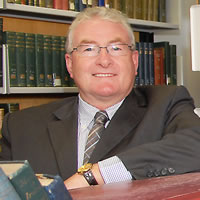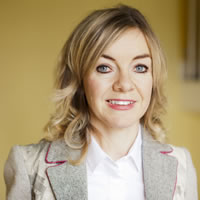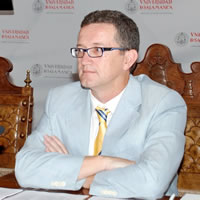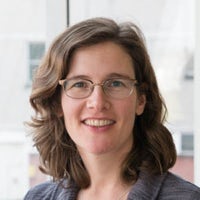Main Speakers
The Hounds of Love: Courtship and Conception in Irish Bardic Poetry
Bardic poetry has often been portrayed as a genre that is entirely resistant to change and the bardic poet has even been depicted as a figure whose mindset differed little from that of the pagan priest or druid. It is asserted that this extreme conservatism is manifest in seemingly arcane beliefs such as the notion of the prince being married to his kingdom, the depiction of the poet and his prince as lovers and the entitlement of the poet to share his lord’s bed. This paper will argue that such a characterization ignores the social and political significance of these concepts and overlooks the prevalence of corresponding ideas in late medieval and early modern Europe. Particular attention will be paid to a bardic poem that throws much light on the poet-patron relationship, offers insights into the notion of bardic courtship and presents a novel view of how bardic poetry itself is conceived and created. The contention is that poems such as this must be read within their contemporary cultural and intellectual milieu rather than being seen as shadows of a dim pre-Christian past.

Ailbhe Ó Corráin
Born in Belfast and educated at St. Malachy’s College and Queen’s University Belfast, Ailbhe is Emeritus Professor of Irish at Ulster University and formerly Director of the Irish and Celtic Studies Research Institute, Derry. He lectured previously in Celtic Languages and Literature at the University of Uppsala, Sweden (1980–87 and 1989–94) and in Celtic Languages at the University of Bonn, Germany (1987–89). He was made a Docent of the University of Uppsala in 1992, designated a Senior Distinguished Researcher at Ulster in 2009 and acted as Visiting Professor in Uppsala from 2008 to 2012. He has published on many aspects of Irish language and literature, in particular in the areas of syntax, semantics and Classical Irish poetry. His Marstrander Lecture on Giolla Brighde Ó hEódhasa (Oslo 2012) led to the publication of The Pearl of the Kingdom: A Study of A fhir léghtha an leabhráin bhig by Giolla Brighde Ó hEódhasa (2013) and this was followed by two other monographs on the same poet, The Light of the Universe: Poems of Friendship and Consolation (2014) and The Dark Cave and the Divine Light: Verses on the Human Condition (2016). Seminal articles on language and linguistics include ‘On the Syntax and Semantics of Expressions of Being in Early Irish’ (1997); ‘Spatial Perception and the Development of Grammatical Categories in Irish’ (1997); Aspects of Voice in the Grammatical Structure of Irish (2001); ‘On the Evolution of Verbal Aspect in Insular Celtic’ (2013) and ‘Rudimenta Grammaticae Hibernicae’ (2017). He is editor-in-chief of Studia Celtica Upsaliensia, Vice-President of Societas Celtologica Nordica and a former president of the European Society for Irish Studies. He currently sits on the Management Board of the Royal Irish Academy’s Historical Dictionary of the Irish Language and on the RIA’s Coiste Léann na Gaeilge, Litríocht na Gaeilge agus na gCultúr Ceilteach. He is Chairman of éigse Cholm Cille and formerly sat on the Management Board of the School of Celtic Studies, Dublin Institute for Advanced Studies.
Writer as righter? Irish-language poetry and human rights ideals
Drawing on Seamus Heaney’s espousal of the “writer as righter” (2010), this paper will discuss the role of the poet in an interconnected world. Literary devices such as metaphor, allegory and metonymy are regularly employed to discuss human rights issues and concerns. The potential for use and misuse by those who wish to inform public opinion, obliges us to deepen our understanding and appreciation of literary modes of expression that can cultivate transnational solidarity or conversely, arouse suspicion of ‘dangerous others’ and incite transnational discord and conflict. What role does the contemporary Irish-language poet play in this context?

Rióna Ní Fhrighil
Rióna lectures in contemporary Irish-language literature in NUI Galway. She is author of Briathra, Béithe agus Banfhilí (An Clóchomhar 2008), a comparative study of the poetry of Nuala Ní Dhomhnaill and Eavan Boland. She compiled a multi-author collection of essays on critical theory and contemporary poetry in Irish called Filíocht chomhaimseartha na Gaeilge (Cois Life, 2010). She is also co-editor of the peer-reviewed journalLéann. Rióna was the principal Irish-language researcher on the AHRC-funded project ‘The Representation of Jews in Irish Literature’. In 2018 she was awarded substantial research funding under the prestigious Irish Research Council Laureate Award scheme and is Principal Investigator of the project ‘Human Rights and Modern Irish Poetry’. She is also co-director of the multidisciplinary project Aistriú: crossing territories, languages and artformswhich is funded as part of Galway’s European Capital of Culture programme (2020).
From pre-Indo-European to Proto-Celtic and beyond: Some of the Possible Phonetic and Phonemic Effects of Language Shifts in Central, Southern and Western Europe
Exploring phonological resemblances between languages of different genetic origin in roughly the same geographical area will not lead us to counter-propose a different genetic affiliation. The idea is that all or most of them have replaced former languages existing in their respective areas. Language shift, necessarily, results in the incorporation of a few traits from the language replaced into the new one replacing it. This substratum phenomenon is well known in the context of language shift and has been extensively researched. When and if we are able to identify specific linguistic traits (the more specific the better) that imply neat and significant divergence between particular languages and other languages of their respective families, it could be indicative that these traits in particular were triggered by some characteristics of the languages they geographically replaced. If more than one language group in the same geographical area share some of these traits, there is a greater possibility that something discernible relating to the replaced language of that area has been left behind and that we might be able to glean indirect information about some of the characteristics of the language(s) once spoken there and later replaced. In this presentation we will be exploring how the effects of the shift to Proto-Celtic from an unknown pre-Indo-European language (or languages) could have affected Proto-Celtic, and also how the shift to late Latin from various Celtic dialects could have affected Western Romance languages. We also aim to demonstrate how the substratum phenomenon could have implications about our views concerning the historical geographic position of different languages; Basque, for example – or lost languages with phonetic similarities to Basque, not necessarily genetically related to it – sharing borders with Celtic, Lusitanian, Italic and other languages or language groups (even Germanic?).

Juan-Luis García-Alonso
Juan-Luis has been Professor of Greek at the Department of Classical Philology, University of Salamanca, since 2002. He has also undertaken various other duties at Salamanca, including Academic Secretary of the Faculty of Philology (2004–2010), Vice-Dean for International Relations and Erasmus Coordinator of the Faculty of Philology (2010–2012) and Director of the Centre for Continuing Education (2014–2018). During the earlier part of his career he was a visiting scholar and researcher at various universities, including Trinity College Dublin (1988–9), where he started his research in Celtic languages, Oxford (1991–6) and Harvard (1991–4), two institutions at which his PhD dissertation took shape and where his first postdoctoral research was undertaken. He was awarded his PhD (Salamanca, 1993) in Classical Philology and Indo-European Linguistics and his research continues to be informed by a strong interdisciplinary approach. As a scholar in the field of Ancient Indo-European (particularly Hispano-Celtic) Languages, the centrality of onomastics in his linguistic research has led to interactions with other fields such as Archaeology, Ancient History and the History of Science. Through his work on Claudius Ptolemy he has developed an interest in the geographical and astronomical knowledge of Ancient Greece and in how this is reflected in literature, as well as in the education and scientific research of the Greek Orient. Among his publications are La Península Ibérica en la Geografía de Claudio Ptolomeo (Vitoria, 2003) and the edited volumes Continental Celtic Word Formation: Onomastic Data (Salamanca, 2013) and Celtic and Other Languages in Ancient Europe (Salamanca, 2008). One of his more recent contributions, ‘La soledad del vasco’ was published in Studia Philologica et Diachronica in Honorem Joaquin Gorrochategui. Indoeuropaea et Palaeohispanica, José María Vallejo, Iván Igartúa y Carlos García Castillejo (eds.), Anejos de Veleia Minor, 35 (Vitoria, 2018), 127–146. At present, Juan-Luis is the Principal Investigator of the Erasmus+ KA2 CBHE project XCELING (Towards Excellence in Applied Linguistics), 2017–2020, and since 2012 he has been a member of the Editorial Board of the journal Minos.
The Possibilities of Children’s Literature
One could easily accuse scholars of children’s literature of escaping into a world of fantasy, of immersing themselves in the magic of a literature which appeals to readers still young enough to experience wonders and marvel at miracles. This lecture shows otherwise: indeed, the study of children’s literature ties the researcher very concretely to the things of this world. What each generation tells its children, and the way it chooses to tell it, are very much connected to current conceptions of childhood, as well as the social and cultural norms that are fostered in the child.
Children’s literature in the Celtic languages, equally affected by such norms, is also shaped by factors related to the ‘minority’ context. On the one hand, a lack of resources and investment can limit possibilities. But on the other, minority-language texts for children (often overlooked by mainstream literary culture), can present children with alternative world views which engage with a variety of linguistic and cultural identities. The study of children’s literature can therefore provide us with an opportunity to analyse the place of the child within the discourses of language and identity. By examining specific instances of Welsh literature for children over the last century and a half, this lecture will reveal how works written for young readers deal with the present in order to reveal possibilities for the future.

Siwan Rosser
Siwan is a Senior Lecturer and Deputy Head of the School of Welsh, Cardiff University. She graduated in Welsh at Aberystwyth University where she went on to receive MPhil and PhD degrees for her research on popular eighteenth-century literature and the representation of women. Her doctoral and master’s projects were subsequently published in Y Ferch ym Myd y Faled (University of Wales Press, 2005) and Jonathan Hughes: Bardd Pengwern (Barddas, 2007). Siwan’s current research focuses on how childhood, gender and nationhood are imagined and articulated in Welsh children’s literature. Her publications in this area focus on issues such as translation, identity, bilingualism and a code-switching in fiction and poetry for children and young people. Her next monograph will explore how a new discourse regarding childhood was constructed during the nineteenth century. Siwan is also interested in how children engage with reading and in 2016–17 she was commissioned to conduct a Survey of Welsh Books for Children and Young People for the Welsh Books Council. The final report explores the relationship between reading for pleasure, language acquisition and identity formation in a minority language context and the recommendations now form the basis of the Council’s strategy for supporting and promoting Welsh children’s books. Siwan is also the leading editor of the literary journal Llên Cymru published by the University of Wales Press and Chair of the Culture of the 18–19c. Section of the University of Wales’s Alumni Association. One of her main duties at the School of Welsh is to co-ordinate the MA in Welsh and Celtic Studies and at present she is supervising PhD candidates on children’s illustrated literature and the construction of the past in eighteenth-century literature.
Feelin’ Groovy: Interdisciplinary perspective on the origin, nature, and uses of the ogham script
… Invoke my name!
Place your fingers
In the ice-cold notches
Hear me speak …
(From ‘Ogham’, by Susan Connelly,
The Poetry Ireland Review, 68 (Spring 2001), 83-84.)
Ogham is known to Celtic scholars primarily as the vehicle for the earliest evidence for the Irish language. Celticists tend, however, to have a low opinion of the script itself, typically dismissing it as ‘cumbersome’, ‘crude’, and ‘strange’. This is a misapprehension. Viewed in the wider context of historical writing systems, ogham is, in fact, something of a marvel: a radical departure from the scripts which inspired it, brilliant in its practical simplicity, yet intellectually sophisticated.
The ingeniousness of ogham becomes evident when we widen our gaze beyond the fifth-, sixth- and seventh-century monumental stone pillars which dominate the archaeological record, and take in the script’s diverse applications throughout its entire period of use, starting perhaps as early as the second or third century AD (the ‘prehistory’ of ogham) and continuing to the dawn of antiquarian interest in the eighteenth century. This requires critical attention to the too-often overlooked examples found on diverse media other than stone, in and beyond Ireland, and to the various references to ogham inscriptions in early Irish literature. It also requires an appreciation that to write and read ogham was not an abstract process but an embodied experience.
From these perspectives it becomes easier to gain traction on some fundamental questions which have hitherto remained unanswered: Why was ogham invented? What was it used for? How widespread was ogham literacy? Why does the script look the way it does? Why does it read vertically? Why is the order of the letters so different from the standard alphabet? The result is a new appreciation of just how special is ‘virgular quinquecostate ogham writing’ (James Joyce Ulysses ch 17.771-3).

Katherine Forsyth
Katherine grew up in the North-East of Scotland where she developed a fascination with the early medieval inhabitants of the region – the Picts – and their remarkable stone sculptures. She pursued this interest at the University of Cambridge (Dept. of Anglo-Saxon, Norse and Celtic), and then Harvard University, where she gained a PhD in Celtic Languages and Literatures with a thesis on the ogham inscriptions of Scotland. After holding the Rhŷs studentship at Jesus College, Oxford, and research fellowships at St Hilda’s College, Oxford and University College London, she moved to the University of Glasgow’s department of Celtic and Gaelic, where she has taught since 1998. Katherine has published on various aspects of Pictish studies and on sculpture and inscriptions in Scotland and Ireland, having conducted fieldwork there and in the Isle of Man and Brittany. Her research approaches text as material culture, and writing as a social and cultural practice. She has a particular interest in the origin and development of the ogham alphabet and the Pictish symbol system. In 2008 she published Studies on the Book of Deer, the result of a large-scale collaborative research project on mainland Scotland’s oldest manuscript. She has also published inter-disciplinary studies of Celtic board-games. Over the years, Katherine has acted as academic consultant on the display of early medieval sculpture at a number of sites, including Iona, and worked with contemporary artists who seek to engage with Scotland’s ancient art. She is a former chair of the National Committee on Carved Stones in Scotland. She is currently leading a public engagement project, Spoken Here: Mapping Gaelic Glasgow, which explores the city’s Gaelic heritage. Since 2016 she has been the Director of the AHRC’s Centre for Doctoral Training in Celtic Languages.
